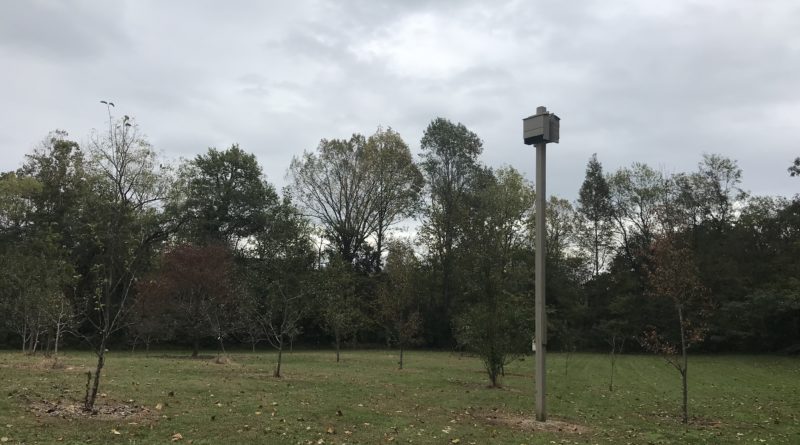Going Batty: MC makes effort to sustain its bat population
In Western culture, most people associate bats with vampires, darkness, blood-sucking and malevolence. The furry, winged creatures have long been considered ominous symbols of death and rebirth. However, in other cultures, especially those of East Asia, bats are seen as symbols of longevity and good fortune.
If that is true, then Anderson Hall was teeming with good fortune before 2013. During construction on the hall that year, colonies of bats numbering in the two-to-three thousands were discovered living in the belfry.
According to Reggie Dailey, Director of the Physical Plant, the bats had to be removed due to federal and state wildlife regulations. Dr. Dave Unger, Associate Professor of Biology, said that the bats also posed a risk of spreading diseases, which was another reason they needed to be removed from the premises.
“The [removal] process involves sealing possible entry points and installing what amounts to a one-way door that allows the bats to leave but prevents re-entry,” Dailey said.
This is the process that was used by certified contractors to remove the bat colonies from Anderson’s belfry in 2013, but what happened to the thousands of bats after the removal?
The hope was that the bats would relocate into the bat boxes provided for them on campus. Unger, along with Dr. Drew Crain, was personally involved with the installation of these boxes. There are currently ten bat boxes and a bat condominium located in the campus woods, at Crawford House and near the steam plant. Unfortunately, it doesn’t appear that the bats have begun inhabiting them yet.
There have been sightings of bats in other buildings on campus, though. These buildings include Sutton Science Center, Thaw Hall, Fayerweather Hall, Carnegie Hall and the Clayton Center for the Arts building A.
“The first day I was in theatre we found a dead bat up in the lofts,” said Andrew Hastings, a freshman at MC. He was referring to the lofts in the Clayton Center building A theater, an area where bat sightings have become very regular.
There are plans in the works to address the issues that the bats pose in the Clayton Center, according to Dailey.
Bats are obviously present on Maryville College’s campus, yet they have still left the bat boxes vacant. There are a few possible reasons for this.
One reason that bats were so drawn to the belfry of Anderson was the lighting, which attracted their main food source: insects.
“As long as we have brightly lighted areas that attract large numbers of insects, we will have the potential for bats on campus,” Dailey said. “…The draw of a food source as large as that around Anderson Hall is hard to overcome.”
Along with a less accessible food source, there is a possibility that the bats are avoiding the bat boxes because they are in too good a condition.
“Bats are notoriously finicky about where they live, sometimes choosing drafty, rickety structures over much more solid ones,” Unger said. “As the boxes age, they may become more appealing to bats.”
Time may be the only thing capable of encouraging the bats to begin inhabiting the boxes. Unger feels optimistic that bats will eventually make them their homes, though.
“We have seen bats flying above, below, and around every bat house on campus, but for whatever reason, they have not made them their home—yet!” Unger said.
While installing the bat boxes and condos and going to the effort of trying to make them as appealing to bats as possible may seem like unnecessary work, there is good reason for the MC community to want the bat population on campus to remain.
“The purpose of providing these alternative habitats to the bats is that they are extremely important ecologically. A single bat can eat up to 1,000 insects (such as mosquitoes and flies) per hour as well as serving as important pollinators. Recent studies have suggested that bats save nearly one billion a year preventing crop damage,” Unger said. He also stated that the bats infesting Anderson were native to the MC Woods. Therefore, the Woods’ ecosystem could profit from their return.
Next time you see a bat flying overhead, perhaps you will consider the role that they play in our environment at Maryville College rather than thinking of the stereotypical reasons for having an aversion to them. Students who hope to spot a bat should keep an eye out around dawn and dusk, as they are most active at these times. If you see a bat on or inside of any of the boxes, please contact Dr. Unger immediately to inform him of the sighting.

